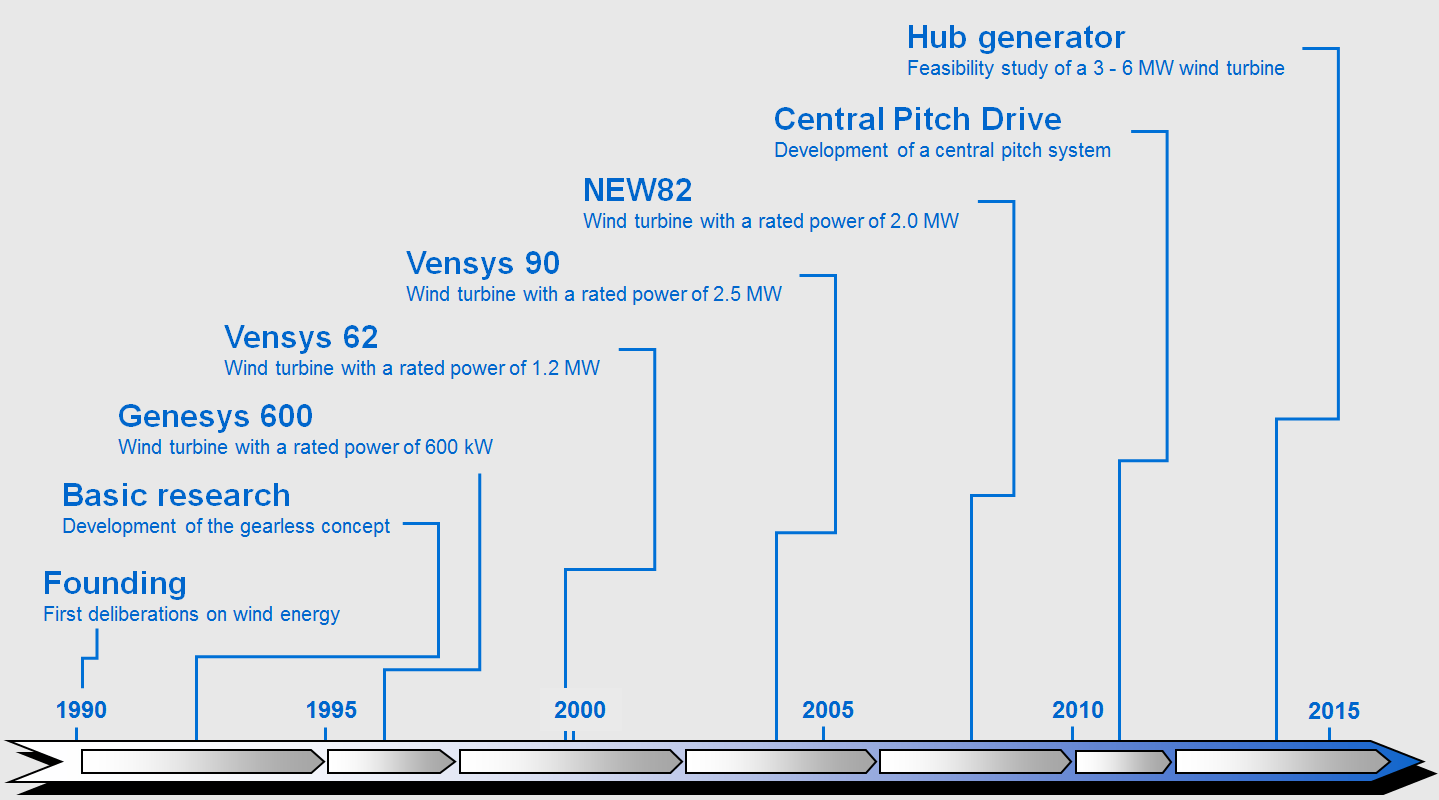Historical background
 The group's work began in spring 1990, when Prof. Klinger and his student assistants, who were working on small construction projects, were called to share their expert opinions and to examine a broken wind turbine. The examination of the remaining parts and the cause of this total loss were the reasons why the group started their first deliberations on wind energy.
The group's work began in spring 1990, when Prof. Klinger and his student assistants, who were working on small construction projects, were called to share their expert opinions and to examine a broken wind turbine. The examination of the remaining parts and the cause of this total loss were the reasons why the group started their first deliberations on wind energy.
After some years of basic research - from the initial ideas up to feasible concepts - a partner for the design of a wind turbine was found in 1995. Within two years, the first wind turbine, GENESYS 600, was designed and erected in Freisen, Saarland.
As of 1999 the Wind Energy Research Group worked on the design of VENSYS_62, a 1.2 MW turbine, which was erected in 2002 and gave its name to the spin-off company Vensys Energy AG, founded in 2000. In the same year INNOWIND Forschungsgesellschaft mbH was founded as an independent Institute. The turbine model VENSYS 62 was installed many times under licence and its power output was increased to 1.5 MW. For this reason, Vensys Energy AG was taken over by the licensee Goldwind in 2008.
Between the founding year of the spin-off company Vensys Energy AG, and 2005, the Wind Energy Research Group was a close partner of Vensys in terms of design, development and applied research. In 2003, Vensys asked the Wind Energy Research Group to design a new turbine with 2.5 MW rated power. Due to many technical innovations, this work was financially supported by the Federal Ministry of Environment.
In 2006 Vensys Energy AG and the Wind Energy Research Group began to work more independently from each other and the Wind Energy Research Group started its own cooperation project with a Chinese newcomer. The aim of this project, called NEW82, consisted of developing a 2 MW wind turbine with a totally new drive train concept. The project was finished in 2010.
Based on the new drive train concept and because of recent developments in the world market, the Wind Energy Research Group is working on new and more complex concepts for the 3 to 4 MW class. Our future projects will be focussed on the industrial realization of these concepts.


